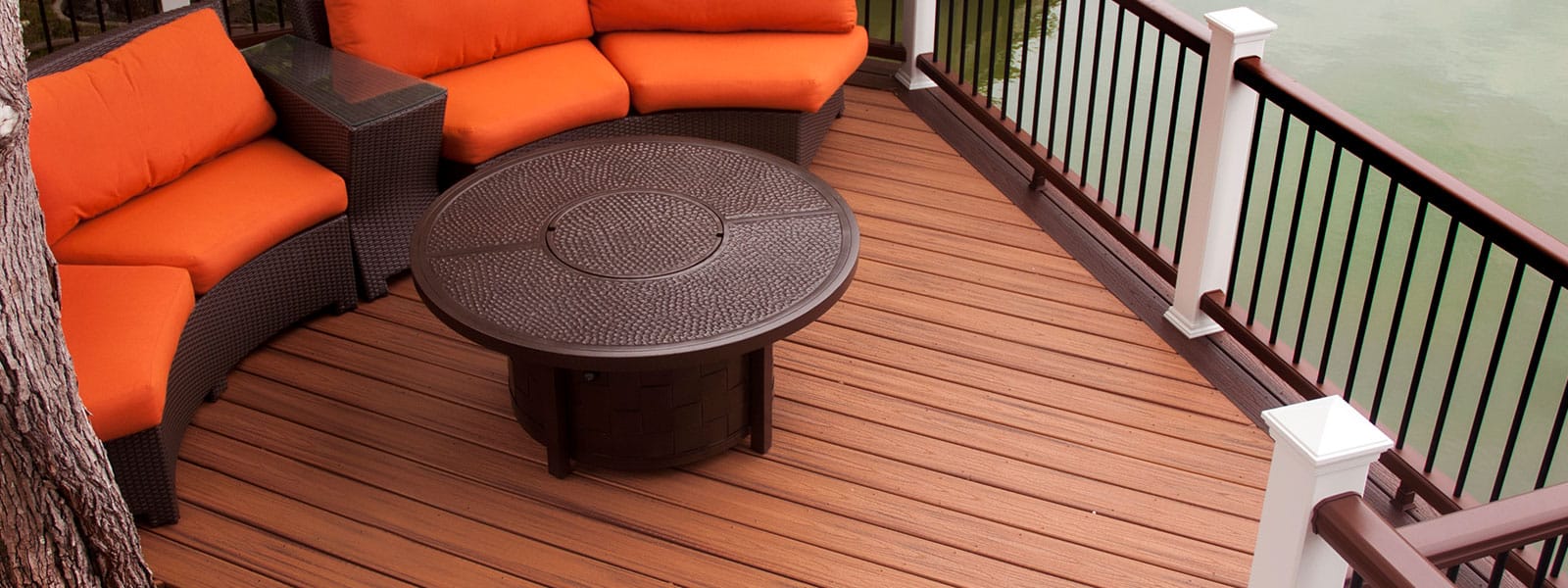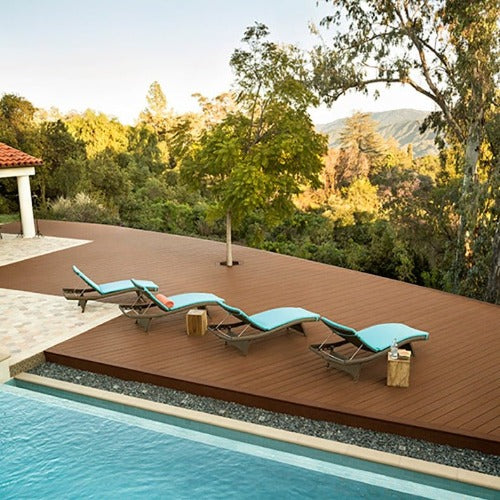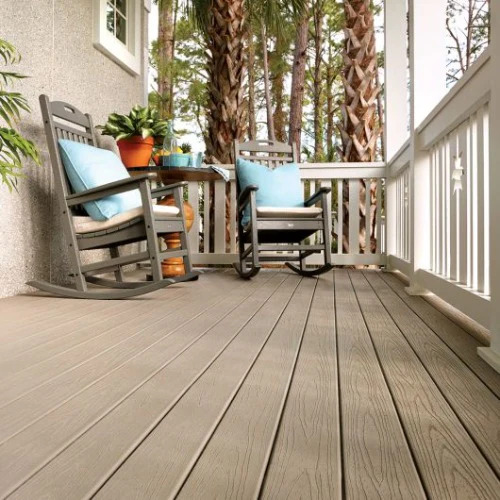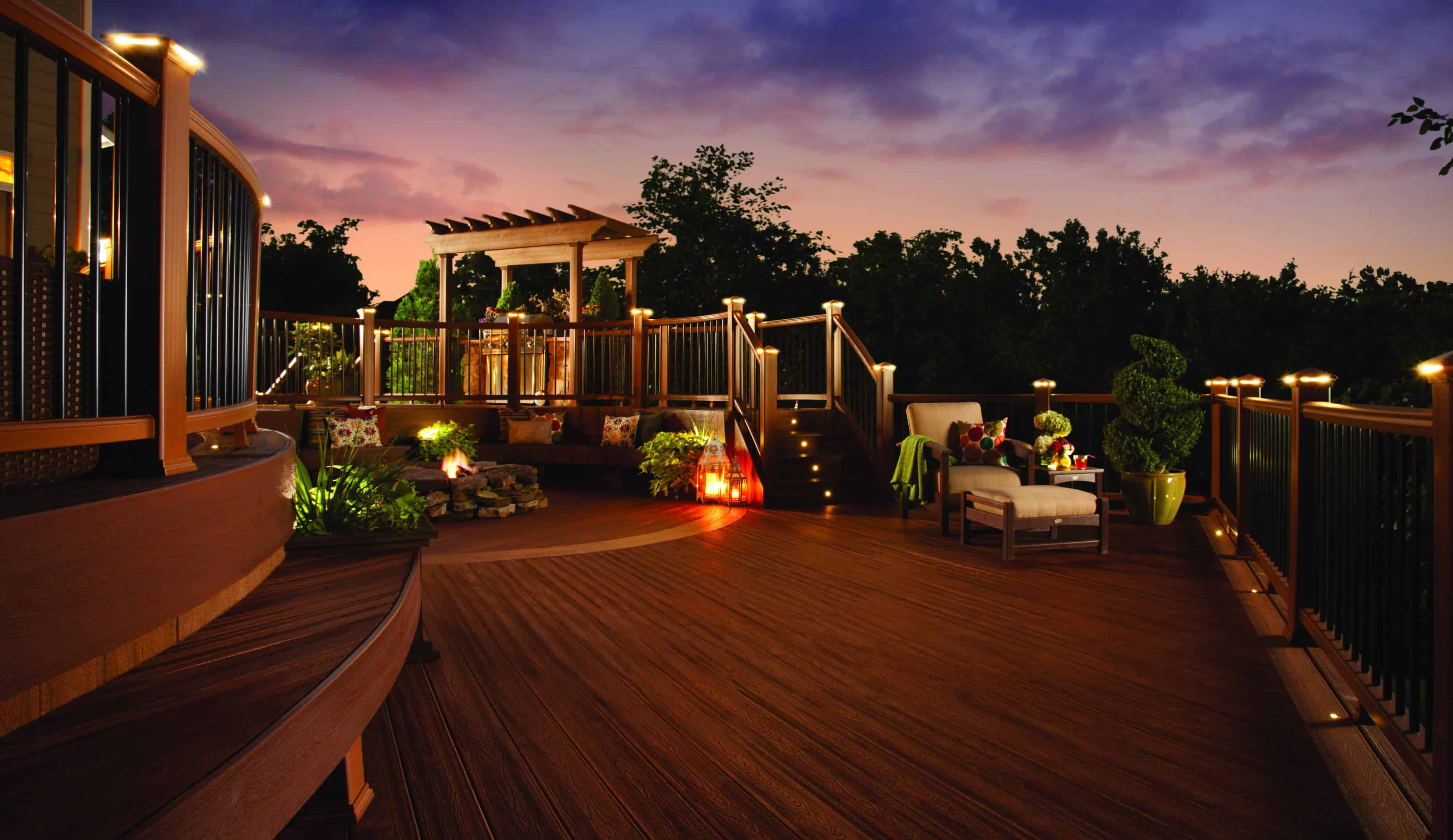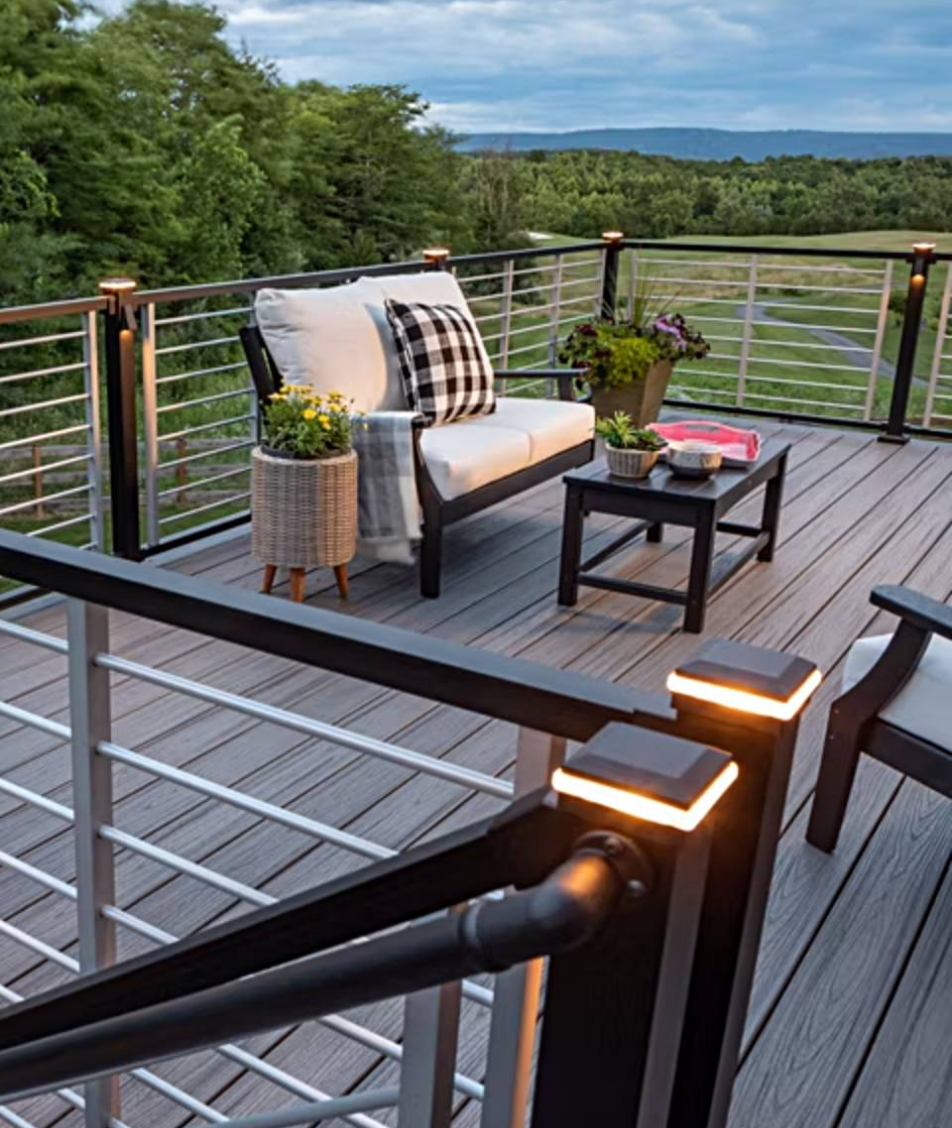Decks & Docks carries Trex’s most popular decking lines to ensure you have access to the highest-quality, best-brand options available. Which of Trex’s products are the best suited for your particular project? Don’t hesitate to speak to our team at Decks & Docks!
TREX

YOUR PREFERRED TREX SUPPLIER
Decks & Docks is proud to be a trusted Trex supplier with a wide range of composite decking for docks and other outdoor applications. An innovator in the world of decking, Trex is a leading manufacturer of composite decking boards. Unique processes combined with a variety of styles make Trex decking a great choice for a stylish deck or dock that is built to last. Known for its resilience, durability, and low maintenance, Trex decking is an excellent choice for creating stylish and lasting outdoor spaces where environments are unforgiving. Plus, Trex decking just looks great!
As an authorized Trex decking dealer, we provide a full selection of Trex products that offer unbeatable protection against the elements. Whether you’re creating a private oasis or a community space, Trex composite decking combines the natural beauty of wood with the durability of a composite core that withstands water, UV rays, and wear and tear from heavy foot traffic.
WHY CHOOSE TREX FOR YOUR DECK OR DOCK?
Trex composite decking is one of the leading brands in the alternative materials and synthetic decking market today. It’s ideal for docks, piers, and waterfront decks and is crafted to endure moisture, direct sunlight, and heavy foot traffic.
In 1996, Trex transformed decking with wood-thermoplastic composite boards, known simply as composite decking boards. Sawdust, old wood pallets, wood chips, and wood fiber are frequently used to create Trex composite boards, as are plastic bags, plastic wrap, and packing films. These items are crafted into high-quality boards rather than being tossed in a landfill. In fact, it’s estimated that Trex keeps 400 million pounds of wood waste and plastic from landfills annually, and Trex is one of the nation’s largest plastic film recyclers.
Trex’s capped composite decking features an extra layer of protection. While the inside of the decking board is similar to more traditional composite boards of the past, the outer shell (the “cap”) is tougher and works as an effective protectant against rot and mildew. This outer shell also allows for stylistic touches like more realistic wood grain and a variety of colors, offering all the benefits of the natural look of wood without all the hassles.
BENEFITS OF TREX COMPOSITE DECKING
Here are just a few of the benefits you’ll enjoy with Trex composite decking materials:
- WATER-RESISTANT DESIGN. Trex decking won’t warp or swell, even with consistent water exposure, and fights off mold and mildew.
- OUTSTANDING DURABILITY. Trex products will not splinter, warp, or crack and resist fading and staining.
- MINIMAL MAINTENANCE. Aside from the occasional soap and water cleaning, Trex decking does not require the same level of maintenance as a wood deck—saving you time and money. No need to sand or stain with this product!
- UNPARALLELED STYLE. With numerous colors and style lines, Trex decking allows you to create a unique space that matches the architectural feel of your home. Trex also makes railings and lighting that work together to create cohesive, enjoyable outdoor spaces. Whether you envision a curved deck or a two-story deck, a Trex board is a perfect fit.
- AWARD-WINNING QUALITY. With over 20 years of composite decking experience, Trex has amassed a reputation for its award-winning quality through multiple awards and recognition. Trex has been recognized as the top brand for Brand Familiarity, Brand Used Most, and the Brand Used in the Past Two Years in the Builder’s Brand Use Study—earning top marks for 10 years in a row.
- DESIGN INNOVATION. Trex has demonstrated that their products are more than just reliable and dependable—they’re exceptional. Their capped composite decking continues to set the mark for high-quality decking and has been awarded the “Best of Houzz” Design Award multiple years in a row.
- ECO-FRIENDLY SUSTAINABILITY. Green Builder Media has honored Trex by naming it the “Greenest Decking” brand for many years in a row! In addition to helping reduce waste through its innovative practices, Trex leads the industry in recycling programs and environmental projects. Trex provided the decking materials for a boardwalk in the Maui Wildlife Refuge complex and has a program for helping kids get into recycling. Trex also assists in educational efforts to keep the environment clean and healthy.
- 25-YEAR LIMITED WARRANTY. Trex stands behind its products and backs them with a 25-year limited residential warranty.
TOP DECKING PRODUCTS FROM TREX AT DECKS & DOCKS
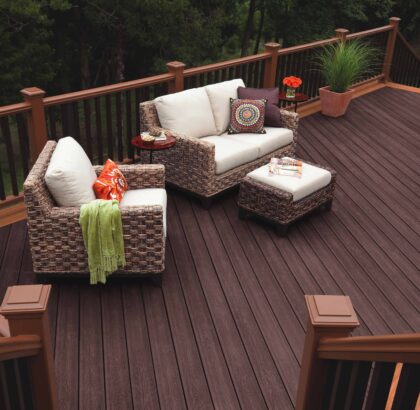
Trex Transcend
Trex’s premier line, Trex Transcend, provides unparalleled protection against fading, stains, scratching, and mold growth. With rich colors and textures, Transcend is a top choice for waterfront decks and docks.
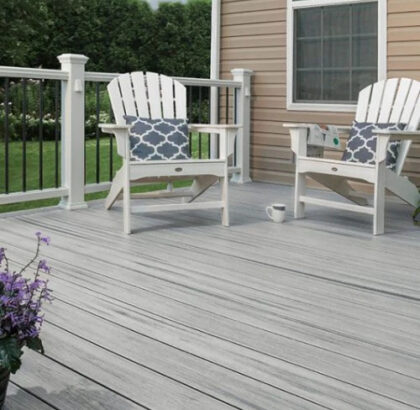
Trex Enhance
Enhance is ideal for homeowners looking for an affordable yet resilient deck option. With 9 different Basics and Naturals color options, choose from gorgeous woodgrain patterns with everything from Toasted Sand (brown) to Rocky Harbor (grey).
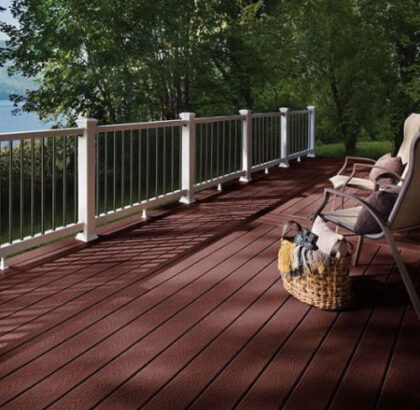
Trex Select
An affordable choice for the budget-conscious, Trex Select is available in 5 colors. Trex Select has enhanced moisture, mold, and mildew resistance.
DECKS & DOCKS:
YOUR PREMIUM TREX SUPPLIER
Decks & Docks is proud to be a Trex Elite Dealer. We have sold this high-quality composite decking for decades. We’ll help you select the right composite decking, railings, and lighting for your project and your budget.
Want to learn more about Trex and whether it’s a good fit for your next project? Browse our online catalog of Trex Products through our partner, The Deck Store, contact us online, or stop by one of our locations to learn more.
FAQs
What makes Trex composite decking good for boat docks?
Trex composite decking is ideal for docks because of its durability and resistance to water, mold, rot, and mildew. It’s engineered to withstand constant exposure to moisture and sunlight, making it the preferred choice over traditional wood.
Is it cheaper to build a deck with wood or Trex?
While the initial cost of Trex may be higher than wood, Trex’s long lifespan and low maintenance requirements make it more economical in the long run. Wood decks often require frequent repairs and treatments, whereas Trex maintains its look and performance with minimal upkeep.
Is Trex decking slippery when wet?
Great question! While no decking has complete anti-slip resistance and can become slick when it rains, ices, or snows, Trex decking has a moderate traction level. The manufacturer recommends safety and caution when the weather or environment produces slippery conditions and using rock salt or calcium chloride to prevent ice or snow build-up. Overall, Trex is an excellent choice for docks and waterfront installations, but users must always exercise caution around areas with any form of water out of common sense.
DECKS & DOCKS:
YOUR OASIS AWAITS
Are you ready to get started?
Chat with one of our experts today!
